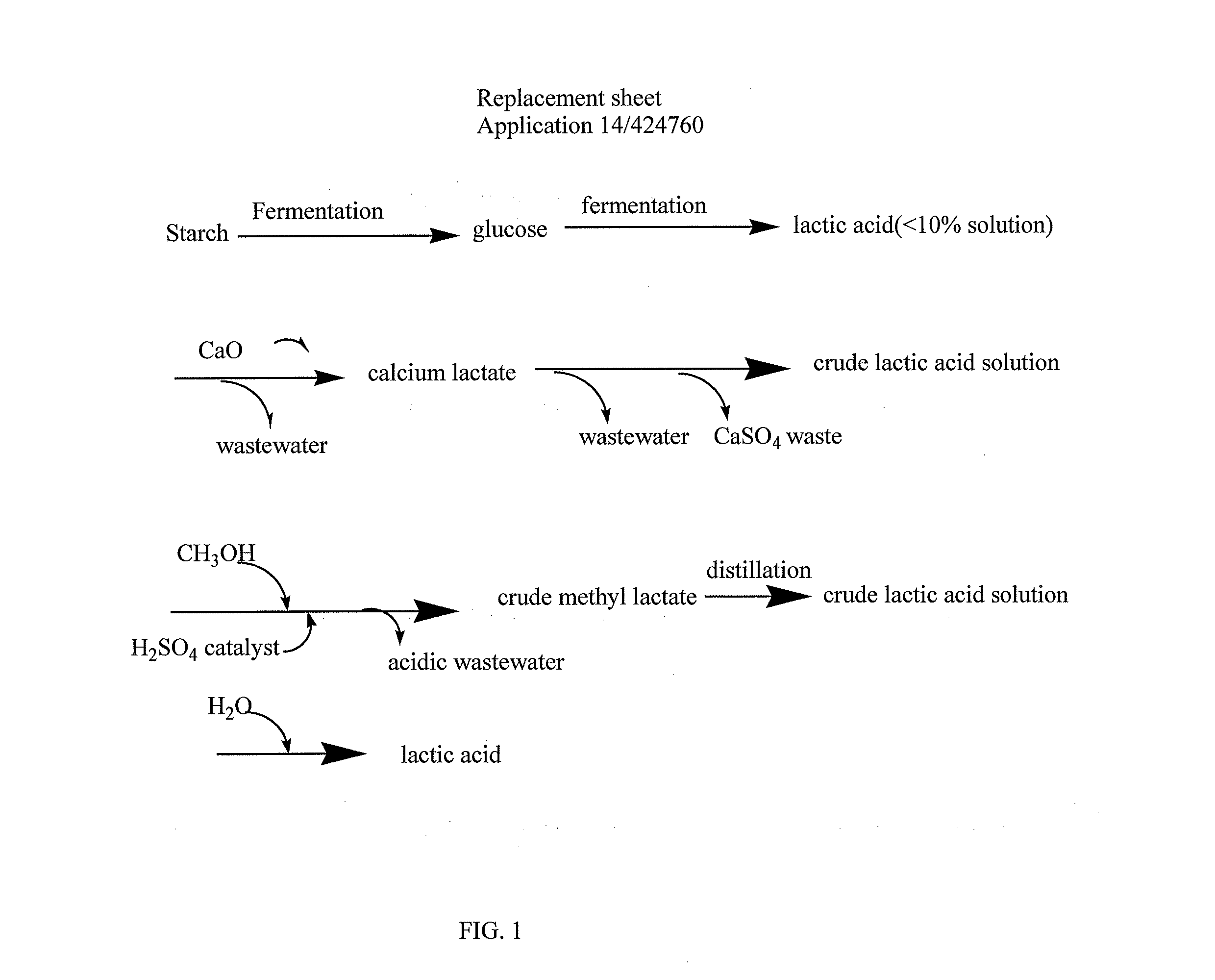Method for synthesis of lactic acid and its derivatives and catalyst for preparing same
a technology of which is applied in the field of catalysts for preparing lactic acid and derivatives thereof, can solve the problems of low rate, long reaction time, low product, etc., and achieves low energy consumption, simple process, and high utilization rate of raw materials.
- Summary
- Abstract
- Description
- Claims
- Application Information
AI Technical Summary
Benefits of technology
Problems solved by technology
Method used
Image
Examples
example 1
[0059]0.2281 g of SbCl3.2H2O, 8.010 g of methanol, and 0.4010 g of microcrystalline cellulose are added into a reactor to form a mixture. The reactor is then sealed, and heated to 180° C. with stirring to allow the mixture to react at 180° C. for 4 h. The reactor is cooled with water to room temperature. A certain quantity of n-butanol as an internal standard substance is added into the mixture, and the resulting mixture is shaken up and then taken into a centrifuge tube for centrifugal separation. Then, the supernatant is taken for gas chromatographic analysis. The yield of methyl lactate is 6.0%, the yield of methyl levulinate is 6.2%, and the yield of methyl formate is 1.1%.
example 2
[0060]0.2001 g of SnCl2.2H2O, 4.000 g of methanol, and 0.2004 g of microcrystalline cellulose are added into a reactor to form a mixture. The reactor is then sealed, and heated to 180° C. with stirring to allow the mixture to react at 180° C. for 4 h. The reactor is cooled with water to room temperature. A certain quantity of n-butanol as an internal standard substance is added into the mixture, and the resulting mixture is well shaken and then taken into a centrifuge tube for centrifugal separation. Then, the supernatant is taken for gas chromatographic analysis. The yield of methyl lactate is 10.8%, the yield of methyl levulinate is 4.2%, and the yield of methyl formate is 0.2%.
example 3
[0061]0.3106 g of SnCl4.5H2O, 4.000 g of methanol, and 0.2003 g of microcrystalline cellulose are added into a reactor to form a mixture. The reactor is then sealed, and heated to 180° C. with stirring to allow the mixture to react at 180° C. for 4 h. The reactor is cooled with water to room temperature. A certain quantity of n-butanol as an internal standard substance is added into the mixture, and the resulting mixture is well shaken and then taken into a centrifuge tube for centrifugal separation. Then, the supernatant is taken for gas chromatographic analysis. The yield of methyl lactate is 8.3%, and the yield of methyl levulinate is 3.7%.
PUM
 Login to View More
Login to View More Abstract
Description
Claims
Application Information
 Login to View More
Login to View More - R&D
- Intellectual Property
- Life Sciences
- Materials
- Tech Scout
- Unparalleled Data Quality
- Higher Quality Content
- 60% Fewer Hallucinations
Browse by: Latest US Patents, China's latest patents, Technical Efficacy Thesaurus, Application Domain, Technology Topic, Popular Technical Reports.
© 2025 PatSnap. All rights reserved.Legal|Privacy policy|Modern Slavery Act Transparency Statement|Sitemap|About US| Contact US: help@patsnap.com


